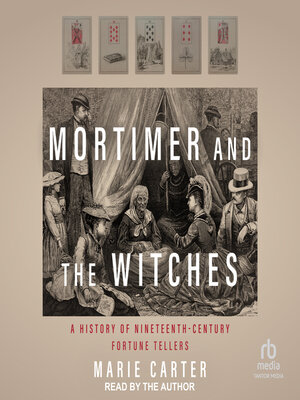Mortimer and the Witches
audiobook (Unabridged) ∣ A History of Nineteenth-Century Fortune Tellers
By Marie Carter

Sign up to save your library
With an OverDrive account, you can save your favorite libraries for at-a-glance information about availability. Find out more about OverDrive accounts.
Find this title in Libby, the library reading app by OverDrive.



Search for a digital library with this title
Title found at these libraries:
| Library Name | Distance |
|---|---|
| Loading... |
Under the pseudonym Q. K. Philander Doesticks, P. B., humor writer Mortimer Thomson went undercover to investigate and report on the fortune tellers of New York City's tenements and slums. When his articles were published in 1858, they catalyzed a series of arrests that scandalized and delighted the public. In Mortimer and the Witches, author Marie Carter examines the lives of these marginalized fortune tellers while detailing Mortimer Thomson's peculiar and complicated biography.
Nineteenth-century fortune tellers offered their clients answers to all questions in astrology, love, and law matters. Yet Doesticks saw them as the worst of the worst. His investigative reporting aimed to stop unsuspecting young women from seeking the corrupt soothsaying advice of these so-called clairvoyants and to expose the absurd predictions of these "witches."
Carter views these stories of working-class, immigrant women with more depth than Doesticks's mocking articles. She presents them as three-dimensional figures rather than the caricatures.
Mortimer and the Witches offers new insight into the neglected histories of working-class fortune tellers and the creative ways that they tried to make a living.
Nineteenth-century fortune tellers offered their clients answers to all questions in astrology, love, and law matters. Yet Doesticks saw them as the worst of the worst. His investigative reporting aimed to stop unsuspecting young women from seeking the corrupt soothsaying advice of these so-called clairvoyants and to expose the absurd predictions of these "witches."
Carter views these stories of working-class, immigrant women with more depth than Doesticks's mocking articles. She presents them as three-dimensional figures rather than the caricatures.
Mortimer and the Witches offers new insight into the neglected histories of working-class fortune tellers and the creative ways that they tried to make a living.







